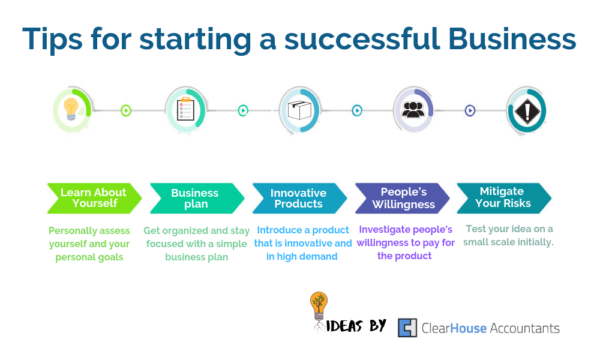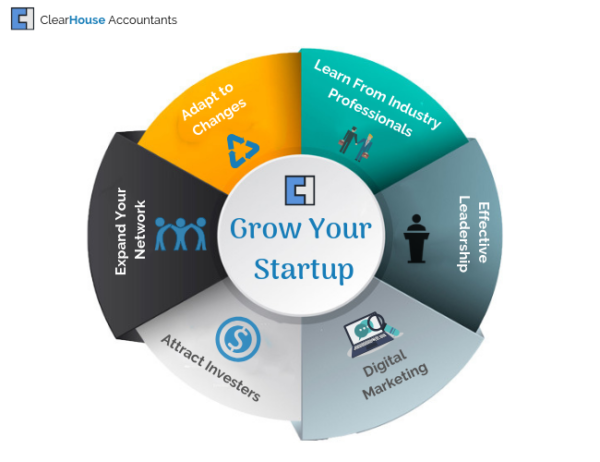Starting a successful business in 2025 is more accessible than ever. While powerful digital tools and global connectivity have removed many barriers, most startups still struggle due to poor planning, unclear goals, or simply products that miss the mark.
Business owners need to establish an effective strategy, market their products, attract customers, and deal with problems in real-time.
In this guide, we’ll provide 16 actionable tips on how to start a successful business that thrives in today’s fast-moving landscape.
Let’s explore!
Key Takeaways on How to Start a Successful Business
- Essential Planning and Goal Setting: Start by defining what success looks like to you, whether it’s a global company or a thriving local shop. A well-thought-out business plan is crucial, outlining your target customers, products, and unique selling points, guiding your journey from inception to launch.
- Understanding Market Needs: Achieving product-market fit is vital. Your product or service should solve a real problem for a specific audience. Conduct thorough market research to understand customer needs and preferences, and adjust your offerings accordingly to meet those demands.
- Financial Management and Cost Control: Keep startup and operational costs low when possible to mitigate financial risk. Explore various funding options if necessary, but prioritize sustainability.
- Adaptability and Continuous Learning: One of the most important tips on how to start a business is to be prepared to learn from mistakes and adapt your business model in response to market changes and feedback.
- Built a Strong Network: Building a solid network within your industry can provide vital support and insight, enhancing your ability to navigate the challenges of entrepreneurship.
Tip 1: Define Your Long-Term Business Goals
Before you start building a product or brand, you should define what success means to you. Are you aiming for a small, sustainable shop or a fast-scaling startup? Your goals influence everything from funding strategy to business structure.
It’s important to think carefully about long-term business goals because they will play an important role in making decisions about a business. For example, a business owner who is content with a small shop might decide to self-fund their business and only open a single, local storefront. Another business owner might want to swing for the fences, taking on investors and opening locations in multiple cities right from the start.
Business owners should also think about their own tolerance for business and financial risk. Some businesses are simply riskier than others. If you’re aiming for rapid growth, be prepared for higher risks and financial uncertainty. If you prefer stability and lower risk, consider a more conservative launch.
For entrepreneurs who are willing to take on more risk, take time to learn about how to identify and mitigate risks.

Tip 2: Create a Business Plan
A business plan is one of the most critical documents a founder can create early in the process of launching a business. It serves as a blueprint for the company, laying out everything from who the intended customers are to what goods and services a business will offer.
From the first day an entrepreneur starts working on their launch to opening day, the business plan should be their guide.
There are no formal requirements for what goes into a business plan. However, consider including these sections:
- Business description
- Management and team structure
- Products and services
- Customer analysis
- Competitor analysis
- Marketing and sales
- Finances
Above all else, the business plan should lay out what makes a new business unique from existing competitors and why customers will flock to the business.
In other words, the plan should lay out a clear argument for why the business will be successful and how it will achieve that success.
Importantly, the business plan shouldn’t be a static document and it doesn’t need to be perfect at first. Founders will frequently make changes to their plan as their business comes together.
Tip 3: Focus on Product-Market Fit
For a business to succeed, customers have to want what it’s selling.
This might seem obvious, but so many new businesses get it wrong. Founders create a product that no one actually wants or offer a service that doesn’t exactly fit the intended customers.
Business owners should be laser-focused on product-market fit. Whatever goods or services a business offers need to solve a real problem for customer.
For example, founders can identify a gap in a market with extensive customer research.
Spend time talking to customers – ask them how they feel about a hypothetical business and whether they would use it. Entrepreneurs can even send out surveys to collect more data and narrow in on the exact products and services they should sell.
Tip 4: Test the Waters to Minimize Risk
Launching a new business is always going to be risky. It takes a huge amount of time, capital, and emotional energy.
That said, business owners don’t have to jump in fully before they’re confident their venture will succeed.
More often, it’s a good idea to start slow and find low-commitment ways to explore a business idea. As Warren Buffett said, “Never test the depth of the river with both feet.”
For most business owners, it makes sense to launch a business as a side-hustle initially. Instead of quitting a job and giving up reliable income, you could run their new business on nights and weekends. Only once the business is established should they move to full-time to scale up operations.
Another way to mitigate risk is to sell a limited range of products or services at first.
Tip 5: Learn from Your Mistakes
Every new business owner will make mistakes. It’s part of the process. What really matters is how you respond and adapt.
Some of the world’s most successful people have made mistakes and then come back better than ever. For example, Steve Jobs was fired from Apple before he returned to lead the company. Ariana Huffington launched several failed ventures before she founded the Huffington Post.
Successful entrepreneurs don’t obsess over their failures or place the blame on others. Instead, they overcome barriers with persistence and consistency. The key is to approach mistakes as opportunities and to grow from them.
Tip 6: Build a Solid Network
One of the best resources business owners has is a strong network of fellow entrepreneurs, mentors, and advisors.
They understand what it takes to start a business, the unique challenges that an entrepreneur is facing, and the doubts that can creep in when things aren’t going right.
Building a network of other entrepreneurs in the same industry is key to finding support during the startup process. Someone who starts out as a formal acquaintance could turn into a key mentor with advice on important decisions that impact the trajectory of a business.
Networking requires dedication. Business owners can reach out to others in their industry online, over the phone, or in-person at conferences.
Tip 7: Prioritize Learning
Deep industry knowledge is essential for growth. Harness your network and resources like trade journals and conferences. The more you know about your market, the more agile and competitive you will be.
Industry publications are especially helpful.
These often cover news from related companies and can highlight mistakes or opportunities that a business owner should be aware of.
Broader business-centric publications can provide additional help with things like business management, financial management, and hiring that aren’t specific to a single industry.
Tip 8: Build a Team and Be an Effective Leader
A founder’s duty is to plan, strategize and grow their business. While entrepreneurs shouldn’t be afraid to get in the weeds and participate in day-to-day operations, their time is often best-spent focusing on the big picture.
That’s why building a team and delegating effectively is so vital for success in the business world.
The key to building a small business dream team is to be an effective leader. Founders should lead by example, working as they expect their employees to work. For example, if a founder puts in overtime every day and acts positively, their employees are likely to work harder and be more positive as well.
Business owners also need to trust employees and let them work independently. Teams need supervision, but no one wants to be hovered over.
Finally, entrepreneurs can be effective leaders by helping their employees develop professionally. They should institute performance reviews, encourage employees to learn new skills, and create opportunities for growth within a company.
Tip 9: Leverage Digital Marketing Channels
One of the benefits of starting a business in the digital age is that it’s easier than ever before to reach customers.
You can use SEO, paid search ads, email campaigns, and social media marketing to get your message in front of your ideal audience, often for a fraction of the cost of traditional advertising.
This specificity is a game-changer for businesses.
Entire industries have developed around the ability to narrowly target customers based on their preferences.
Small businesses in particular have benefited because they can now compete with retail giants that have much larger advertising budgets and brand-name recognition.
Check out our complete guide to how to create a digital marketing strategy for small businesses for more details.
Tip 10: Keep Costs Low
Runaway costs have been the demise of many small businesses.
It’s all too easy to spend a little here and there, only to realize too late that all of those costs add up to an overwhelming sum. That’s especially true with inflation cutting into profits for many businesses.
While starting a business is expensive, small business owners need to be as frugal as possible. Every bit of savings matters.
Some relatively easy ideas to cut costs include:
- Use free, open-source software instead of paid software
- Negotiate vendor rates
- Invest in automation tools
- Look for used equipment
- Recycle as many materials as possible
- Avoid overhiring
- Limit overtime
In general, the biggest cost that new businesses will face is payroll. Employees are expensive, but they’re also essential to making sure your business runs smoothly.
One way that businesses can reduce payroll costs is to limit overtime when possible.
That might mean reducing a business’s operating hours to 40 hours per week or hiring two part-time employees instead of one full-time employee.
Businesses can also reduce the number of employees they need to hire by giving each team member multiple roles. However, you want to make sure that you don’t sacrifice the quality of the work.
Tip 11: Focus on Stellar Customer Service
Strong customer service is nothing short of essential, especially for small businesses. According to a Zendesk report, 81% of consumers say that a positive customer service experience is important in their decision to make a repeat purchase from a company.
Not only is a happy customer more likely to come back and buy again, but they’re also more likely to tell their friends and family to check out a business.
By the same token, poor customer service can sink a company. The same report found that 61% of consumers will switch to a competitor after just one bad experience with a company.
It’s important for business owners and their employees to be cheerful, helpful, welcoming, and patient. Simple things like greeting a customer at the door or asking their name can make a big difference.
On top of that, small businesses need to provide multiple ways for customers to get in touch. Have a phone number, email, or even a live chat option on the business’s website. Make sure that the customer service team responds to questions quickly and ask for feedback from customers.
Tip 12: Remain Focused on Success
The best entrepreneurs are those who don’t get complacent once a business gets off the ground, but constantly look for new ways to improve.
That could mean scaling up by expanding into new markets, introducing new products that customers love, or doubling down on existing customers to capture more of their business.
However, it’s important not to get ahead of yourself. Ambition and drive are critical for any entrepreneur, scaling too quickly or taking unnecessary risks can just as easily lead to failure than complacency can.
Tip 13: Leverage Technology and Automation
In today’s fast-paced business environment, leveraging technology and automation can be a game-changer. From CRM software to inventory management to AI-powered analytics, automation tools can save you hours per week and improve accuracy.
Staying abreast of technological advancements in your industry can also provide a competitive edge, whether it’s through adopting new e-commerce platforms, utilizing data analytics, or exploring emerging trends like AI and machine learning.
Tip 14: Foster a Positive Company Culture
A positive company culture can significantly impact employee satisfaction, retention, and productivity.
Create an environment where employees feel valued, motivated, respected, and part of a team.
Encourage open communication, recognize and reward achievements, and provide opportunities for professional growth. A healthy company culture not only improves employee morale but can also attract top talent and positively influence your brand image.
Tip 15: Stay Compliant with Laws and Regulations
Ensure that your business complies with all relevant laws and regulations. Ignorance isn’t an excuse.
This includes tax laws, employment laws, health and safety regulations, and industry-specific regulations. Staying compliant not only avoids legal issues but also builds trust with your customers and employees.
Keep informed about any changes in legislation that may affect your business and seek legal advice when necessary.
Tip 16: Prioritize Work-Life Balance
Running a business can be all-consuming, but it’s important to maintain a healthy work-life balance. Burnout can lead to decreased productivity and can negatively impact your decision-making abilities.
Take time to relax and recharge, and encourage your employees to do the same.
How to Start a Successful Business—Step-by-Step Guide
Starting a small business can be complex, but breaking the process down into manageable steps makes it much more approachable.
Here are 10 easy steps to help new business owners turn their business idea into a successful reality.
Step 1: Find a profitable niche
One of the most challenging parts of launching a small business is to decide what kind of business to start. Business owners need to find something that they’ll love to do but that also has money-making potential.
Some questions to ask to generate ideas include:
- What skills do you have?
- What experience do you have?
- What are you passionate about?
- What kind of product or service would you want?
- Are there any businesses you would like to see in your community that don’t exist?
- Are there products or services that could be better?
Based on answers to these questions, business owners can create a shortlist of ideas that hold promise for turning into businesses.
You will also want to think about your goals for the business, how much time you want to commit to it, how much capital you will have to start it, and where you see yourself and your business in 5-10 years. Those types of considerations can help business owners decide which of the ideas on their shortlist is best for them.
Step 2: Conduct market research
Before proceeding with any business idea, entrepreneurs need to make sure that their idea is viable. That requires two types of market research: customer research and competitor research.
Customer research involves identifying the prospective customers for a hypothetical business. Who are they? What do they need? What problem are you solving for them?
Try to get specific: define your target audience by age, income, location, habits, and motivations. Conduct interviews, send surveys, or talk directly to people in your niche to understand how they would respond to your offering.
Competitor research involves identifying competitors to a hypothetical business. Are there other businesses in the area that offer similar products and services? What can you offer that they don’t?
Competitor research should consider whether existing businesses have more demand than they can meet, what their pricing is like, and how they might respond to a new business in their industry.
Step 3: Create a business plan
We covered how to create a business plan in our tips above. A business plan will be essential for any business owner who’s searching for funding, but it’s a good idea even if a business will be self-funded.
The business plan should be as detailed as possible, but it doesn’t need to be perfect at this point. Remember that a business plan is a living document that should evolve over time as you face challenges and come up with new ideas and strategies to succeed.
Step 4: Choose a business name
Choosing a business’s name is a big step. Ideally, your business name should be:
- Relevant and easy to understand
- Memorable and unique
- Easy to pronounce and spell
- Available as a domain name and social handle
Founders who need help with this process can use an AI-powered business name generator. There are several free name generators online from companies like Shopify and Looka.
Before you commit to a name or buy the domain, make sure that it isn’t taken already by checking a state’s online business registry.
Step 5: Register the business
Next, it’s time to choose a business structure and register the new business. Most new business owners choose between:
- Sole proprietorship: Easiest and cheapest to start, but offers no personal liability protection
- Limited Liability Company (LLC): Offers liability protection and tax flexibility
- Corporation (C-Corp or S-Corp): More complex, generally used for startups planning to raise significant capital
By default, most small new businesses start out as a sole proprietorship. Under this structure, a business owner and their business are the same for legal and tax purposes. That can be problematic since a business owner’s personal assets, like their home, are at risk if the business goes bankrupt. That’s why many business owners choose to register their business as a limited liability company (LLC) instead. In an LLC, the business owner and business are separate entities.
To register an LLC, business owners must file paperwork with their state’s Secretary of State and pay a registration fee. They’ll also need to request a free employer identification number (EIN) from the IRS.
Note that some states and cities require local business licenses for businesses in certain industries. Be sure to check local regulations to determine if additional licenses are required. You may also need to register for any relevant taxes such as sales tax, business tax, or payroll tax. Make sure to take care of all legal and regulatory requirements early to avoid fines or legal complications down the road.
Step 6: Open a business bank account
Once the business is registered, business owners can open a business bank account. This is important because business owners should never mix personal funds and business funds. Separate business accounts makes it much easier to track income and expenses, boosts your credibility with customers and lenders, and significantly simplifies tax filing.
A business bank account offers a place to accept payments and make payments to suppliers. It works similarly to a personal checking account and businesses can even have their own checkbooks.
To open an account, you’ll typically need your EIN, your business registration documents, and proof of address.
You may also want to apply for a business credit card or line of credit to build financial history and manage cash flow.
Step 7: Look for funding
Not every business needs external funding, but if your startup requires significant upfront capital, there are many different funding options including:
- Self-funding (bootstrapping): Using your own savings
- Friends and family loans: Informal but potentially risky
- Bank loans or SBA loans: Requires good credit and a solid business plan
- Crowdfunding: Great for consumer-facing products with strong appeal
- Angel investors or venture capital: Ideal for high-growth startups, but you may give up equity
Before you borrow money or accept investment, make sure you understand all of the terms and risks involved. You should also consider your long-term vision and whether your prospective investors are on the same page. Some investors may expect fast growth or influence over business decisions.
Step 8: Hire employees
Some businesses might not need employees at first, but as demand grows, you’ll likely need help eventually. Hiring the right people is absolutely critical. Startup businesses typically need someone who’s hard-working, willing to take on multiple roles, and not afraid to go above and beyond.
However, you may not need full-time employees. Contractors or freelancers can be a fantastic resource to help with tasks like branding, marketing, bookkeeping, website design, and more.
Step 9: Create a website
Nowadays, knowing how to start a successful business means having an online presence.
Whether a business sells online or through a physical storefront, it’s important to have a website. This is one of the main ways that customers will find out about a new business.
The website should include:
- A clear description of what your business offers
- Your location, hours, and contact info
- Social proof, such as testimonials or reviews
- A blog or FAQs to answer customer questions
- A prominent call to action (e.g., “Book a consultation,” “Shop now”)
New business owners can hire someone to create their website, but it’s relatively easy to launch a website on a budget using a website builder platform.
Step 10: Launch
Once all the pieces are in place, it’s time to launch the business. Make the website live, open the shop doors, and get ready to welcome customers. But before you get ahead of yourself, plan out your launch in advance and make sure you and your business are ready to go. Your launch strategy could include:
- Announcing your business on social media
- Running a limited-time promotion or giveaway
- Hosting an opening event (in-person or virtual)
- Reaching out to local press or influencers
- Emailing friends, family, and contacts with a launch announcement
Be sure to put the business’s best foot forward from day one. It’s important to give customers a great experience so they recommend the business to others and turn into repeat customers.
Final Thoughts
Learning how to start a successful business involves a blend of careful planning, market research, prudent financial management, a commitment to continuous learning and adaptation, and a ton of hard work.
By following the steps and tips outlined in this guide, aspiring entrepreneurs can increase their chances of launching and sustaining a thriving business.
Remember, the journey of entrepreneurship is filled with challenges and opportunities alike, and success often comes to those who are prepared, adaptable, and resilient in the face of obstacles.
The key is to stay focused on your goals, learn from your experiences, and keep evolving with the market’s needs.






